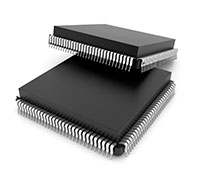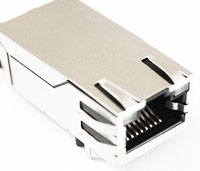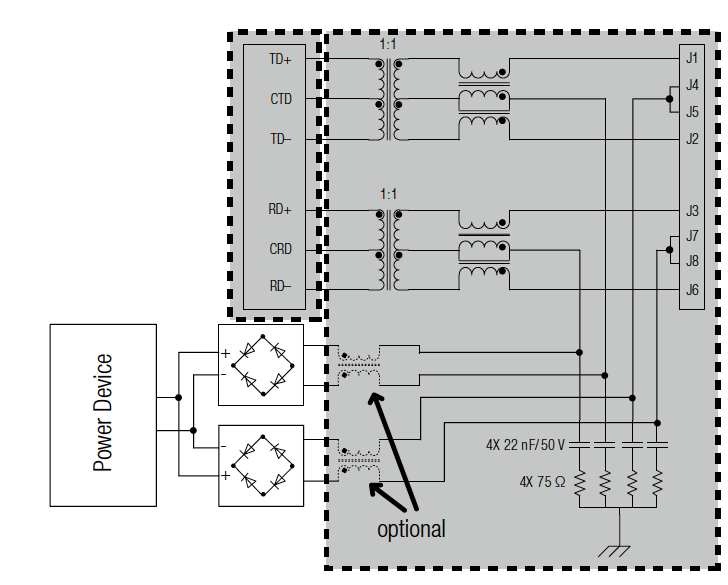POWER OVER ETHERNET Diode/ Rectifier
Bridge Rectifier
First and for all, there are either one or two bridge rectifiers. The current through the
rectifiers is very low (<300mA) and the voltage environment is also low. The standard
bridge for this application will be the B1S~B6S which has an industry standard pin pitch of
2.5mm. Bruckewell further does have the advantage of the MBL06S bridge rectifiers, Low
forward voltage drop, high power efficiency.
Since two bridges are used, the space saving could be important (e. g. in PoE webcams).
There is no significant thermal or current stress in this application so the MBS bridge is
the right choice.
TVS Diode
On the input, in general also a 58V TVS is used. Whenever a cable is plugged and unplugged
it is wise to use a TVS rectifier. Select a part with 58V minimum stand-off voltage such as
the P4SMAJ58 with 400W peak pulse power. A transient voltage protection diode is ideal when
the protection needed is against ESD (IEC61000-4-2) and EFT (IEC61000-4-5). Most PoE
applications are indoors and as such Lightning protection only needs to be up to level 2 in
IEC61000-4-5. A 400W TVS like the P4SMAJ series can easily handle this also because the
lightning pulse waveforms should be short (8/20 – 1.2/50).
Only in extreme cases would a company have to use an 600W/1500W TVS if there are long
outside lines.
Schottky Rectifier
A fly back converter tends to be used in a lot of applications. In most cases, the output
voltages tend to be low and as such Schottky rectifiers are the preferred choice. One can
use a number of industry standard Schottky rectifiers such as the SS14, SS24 and SS34
depending on the current you need to provide at 5V or 3.3V. Since PoE webcams application,
the space saving could be important.
Bruckewell further does havbe the SD14, SD24, SD34 that SOD-123 small package.



